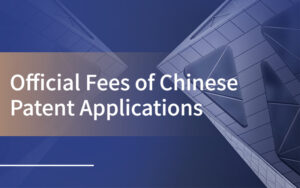Foreign-Filing Licenses for Patents in China
Waht is foreign-filing licenses (FFL) for Chinese patent applications? Like the US, China has its oven requirements of FFL for patents in China. We will talk about FFL in detail in this article.

Why should I learn about China’s requirements for foreign-filing licenses (FFL)?
More and more companies are cooperating internationally. In the US, it has become increasingly common for an invention to involve research teams in China.
Like the US, China has its FFL requirement for inventions. This was introduced in 2010 when the third revision of the Chinese Patent Law came into force.
Companies involving cooperation with each other across the border should be aware that compliance with the FFL requirements is important – it will potentially affect the validity of a corresponding Chinese patent.
In what kind of situation should I request for foreign-filing licenses (FFL) in China?
If the invention or utility model is developed in China, requirement must be complied with before filing a patent application outside China, including a US provisional application.
Two important points should be highlighted here: ①it is an invention patent and a utility model patent; ② This invention or utility model patent is developed in China.
The requirement is invoked when an invention is “developed in China”, and the nationality or residence of the inventors is not relevant. That is, a FFL is still required in China even for a US inventor who has “developed” an invention within China. On the other hand, if the invention was developed by a Chinese inventor while working in the US, then a FFL from China should not be necessary.
What constitutes “developed in China”?
Rule 8 of the Implementing Regulations of the Patent Law[1] provides some guidance. Specifically, according to this rule, an invention or utility model is considered to be “developed in China” if the “substantive contents” of the technical solution of the invention or utility model have been made or created by an inventor within China. The “substantive contents” of the technical solution can be determined based on the contents of the claims and identification of the inventors.
What are the consequences if I violate the rule?
The penalty for violating this provision is that no patent shall be granted in China for that invention or utility model.
Violation of this provision is a ground for both rejection during the preliminary or substantive examination procedures and invalidation during the post-grant invalidation procedure. In addition, administrative sanctions or criminal charges may apply if an applicant violates the foreign filing license requirement as prescribed in Article 20 and divulges national secrets by applying for a patent in a foreign country.[2]
How to request for foreign-filing Licenses (FFL)?
According to Rule 8 of the Implementing Regulations of the Chinese Patent Law[3], an applicant could choose to request for a FFL in four ways:
(1) File a separate request for a FFL with CNIPA, without or before filing a patent application in China;
(2) File a request for a FFL at the time of filing a Chinese patent application;
(3) File a request for a FFL after filing a Chinese patent application
(4) Filing a PCT application with CNIPA as the receiving office.
Detailed information is listed below:

The second method is recommended if you need to receive the license as soon as possible. You may file a Chinese application without requesting for early publication. Then you may choose to keep the application or withdraw it.
Frequently asked questions
1) What if an invention is changed after I get the foreign-filing license?
If an invention is changed after the foreign-filing license is granted, for example due to modifications, and such modifications amount to something to be claimed as a separate invention, then a separate request for a new foreign-filing license is needed.
2) What if an invention is developed corporately by a Chinese team and a US team? That is to say the invention is developed in two countries, and I want to file both a Chinese application and a US application. How shall I proceed?
Typically, the USPTO issues a foreign-filing license more quickly than the CNIPA. The USPTO can usually issue a foreign-filing license within a week under request for expedition, while the CNIPA vary from two weeks to three months. Therefore, for an earlier filing date, an advisable solution is to apply for the U.S. foreign filing license first, possibly in the expedited option, and then file the first patent application in China.
[1] Implementing Regulations of the Patent Law of the People’s Republic of China (promulgated by the St. Council of the People’s Republic of China, June 15, 2001, effective Feb. 1, 2010), r. 8, https://www.wipo.int/edocs/lexdocs/laws/en/cn/cn078en.pdf.
[2] https://www.wipo.int/edocs/lexdocs/laws/en/cn/cn028en.pdf Page 70-71
[3] Implementing Regulations of the Patent Law of the People’s Republic of China (promulgated by the St. Council of the People’s Republic of China, June 15, 2001, effective Feb. 1, 2010), r. 8, https://www.wipo.int/edocs/lexdocs/laws/en/cn/cn078en.pdf.

